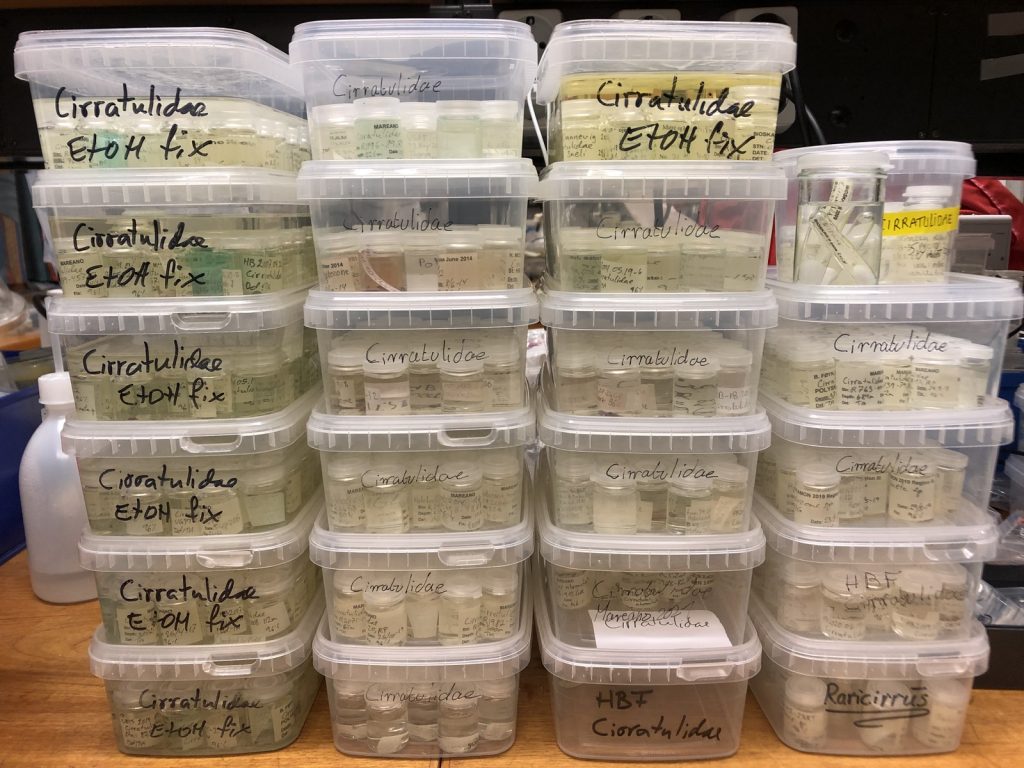We had guest researcher Maël Grosse visiting the lab earlier this winter. Here’s a blog post from his stay:
As part of my recently started Artsdatabanken project, I have just completed a month long visit here at the invertebrates collections. It was a lot of work, but also a lot fun. Everyone was very helpful, providing me with worms to identify (a literally never ending supply!), helping me with the scanning electron microscope and spending hours discussing worms and taxonomy.
My project aims to study and map the diversity of a large family of polychaetes: Cirratulidae. Cirratulids are notoriously difficult to identify, having few characters to work with hidden between the mass of tentacles and branchiae they drag around (Fig. 1). They are quite common and diverse, but poorly known, which is what I am aiming to fix.

Fig. 1. A SEM (Scanning Electron Microscopy) image of a Cirratulid made at the ELMI lab in Bergen. Photo: Katrine Kongshavn
Bergen Museum has the largest collection of polychaetes in Norway, with samples ranging from the North Sea to the Arctic waters of Svalbard, and from the intertidal coastal waters to the abyssal depths of the North-East Atlantic. And indeed, thousands of cirratulid polychaetes were waiting on the shelves to be identified. As it is the environment I had been working the most with in the past couple of years, for this visit I decided to focus on deep sea species. This led me to check samples from all over the Norwegian Sea, including some unique and exciting environments such as the depths of Sognefjord or hydrothermal vents.
At the end of the month, over 5500 specimens, belonging to about 23 species have been examined (Fig. 2). While the majority could be given an name or a species number (in the case of as of yet unnamed species), many could not be identified with confidence, because they were incomplete specimens or from an area where a particular species had not been recorded before. There were even two species I think I had never seen before, which is a very good result for the project! In that case, I selected specimens for DNA barcoding, which will help confirming their identity. I have picked out about 300 specimens for barcoding, so now there is quite a bit of work to do back in my home lab to sequence them all.
So in the end, I would say it was very productive visit, and I will certainly be back for more worms!
-Maël Grosse

